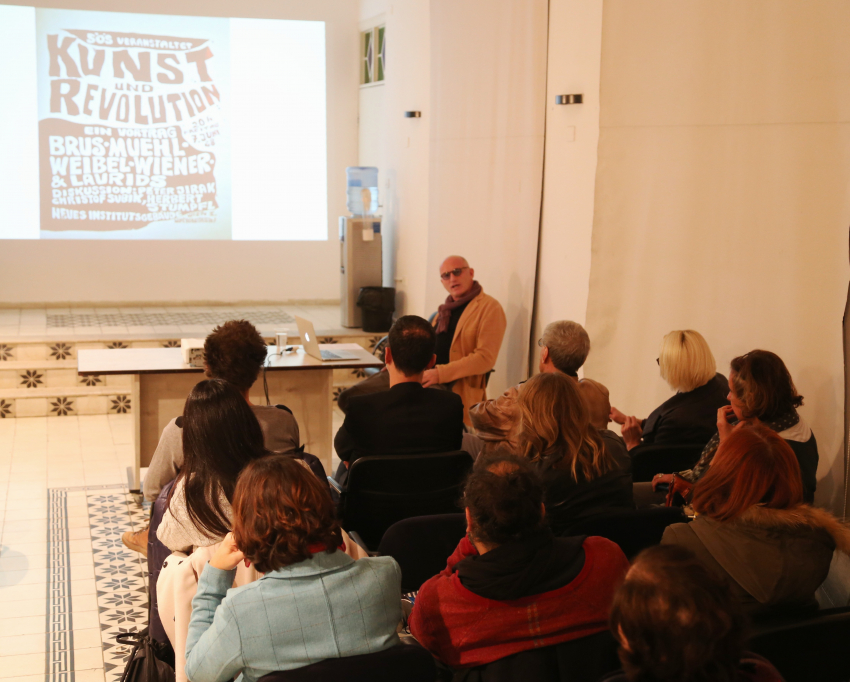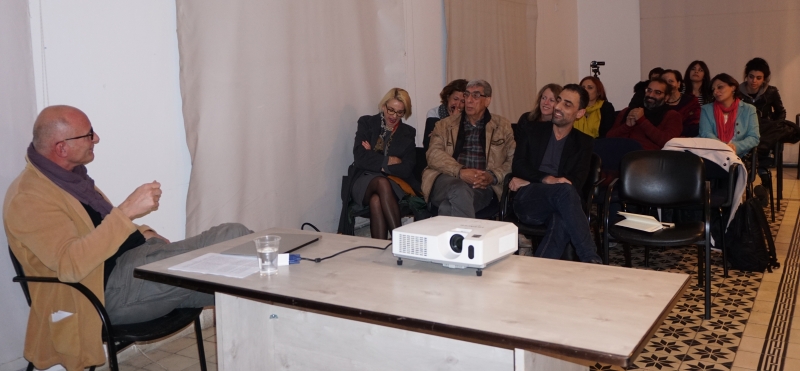
AMQF’s Public Programme organized a lecture by Austrian curator Hubert Klocker, in the Foundation’s headquarters in Ramallah. During the lecture, Klocker presented his experience with the “Viennese Actionism” art movement, its political and social impact.
Klocker said that this was his first visit to Palestine and that the lecture gave him a chance to present the development of “Viennese Actionism”. “It is one of the most important art movements of the post-World War II period,” he added. “Throughout the lecture, I also tried to provide information about the way I manage art exhibitions, give freedom of choice to artists and offer a diversity of spaces for creation”.
Klocker is the director of Sammlung Friedrichshof, in Zurndorf, Austria. He has contributed to a number of publications and has started his work on “Viennese Actionism” in the 1980s. He has also curated a large number of exhibitions related to the artworks of the movement.

“Viennese Actionism” is viewed as one of the major art movements in the post-WWII period, between the 1950s and the 1970s. It included a number of artists whose artwork is known for its “violent” approach to subjects it tackled.
Abdel Rahman Shabaneh, Qattan’s Public Programme Coordinator, said, “This kind of lecture fosters knowledge exchange between Palestine and the world and gives insights to significant art movements, as well as their historical, political and societal contexts” .
Artist Yazan Khalili, who attended the lecture, said it had covered crucial historical and educational aspects of the movement since its birth in Austria. “It is good to learn about art practices from outside the Palestinian context,” he added. “That is, things that are happening far from Palestine and are unrelated to it. Such knowledge opens new horizons to those interested in deepening their understanding of art, especially with regard to art groups and their experiences”.
